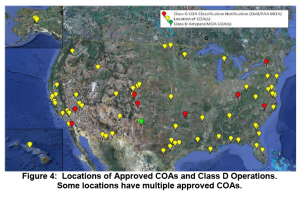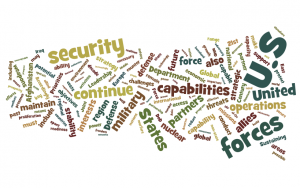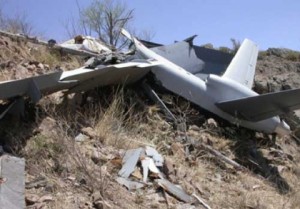The False Flag Waves in the Fog
“Absolute nonsense!” Israel has responded to Mark Perry’s “False Flag” claim that Mossad agents recruited Jundallah members by posing as CIA officers. They’ve responded clearly, they claim, because they don’t want US-Israeli intelligence cooperation to get as bad as it did when we caught Jonathan Pollard spying for Israel.
But I’m just as interested in the “proof” Israel offers that this didn’t happen: that Meir Dagan is still welcome in Washington.
The senior Israeli government official said that if there were any truth the claims in Perry’s report, Meir Dagan, the head of the Mossad at the time of the alleged operation, would have been declared a persona non grata in the U.S. and that “Dagan’s foot would not have walked again in Washington”.
Now, it is true that Dagan ran Mossad at the time–2007-2008–when the recruitment in question is alleged to have taken place. And it is true that under Dagan Mossad got rather embarrassingly caught using US (and other Western allies’ passports to facilitate their assassination squads in the Dubai assassination of Quds Force surrogate Mahmoud al-Mabhouh.
But it is also notable that Dagan has made a series of increasingly strident remarks against war with Iran and for the kind of engagement that the latest scientist assassination seems designed to undercut. And then there’s the presumably intentional irony in the statement: Dagan’s ability to travel is limited not by his welcome among Western allies, but because Bibi Netanyahu revoked Dagan’s diplomatic passport last summer in response to his efforts to prevent war against Iran. Since traveling without diplomatic immunity would expose him to arrest for acts that include the al-Mabhouh assassination, Dagan, the former head of Israel’s assassination agency, cannot travel freely to prevent such assassinations in the future.
In other words, this is a very witty but nevertheless quite serious reminder that the same people now trying to find a peaceful path forward are themselves thoroughly implicated in the same crimes they now disown. This is Bibi’s camp reminding that everyone has been breaking the rules in ways that could cause significant legal trouble.
Right on cue, Iran has sent diplomatic notes to both the US and Britain, claiming that the CIA is behind the most recent assassination.
The message addressed to the U.S. government, read, “According to authentic documents and reliable information, the assassination plot was directed, supported, and planned by the U.S. Central Intelligence Agency (CIA) and was carried out with the direct involvement of the agents affiliated with this organization, and the government is directly responsible for it and should be answerable based on international regulations and rights and bilateral commitments.”
[snip]In the protest note, Iran also said, “The Islamic Republic of Iran condemns the inhumane assassination, calls on the U.S. government to provide an immediate explanation, seriously warns about its repercussions, and calls on the (U.S.) government to stop supporting any kind of anti-humanitarian terrorist action against the lives of Iranian citizens, which is in contravention of international rights and the relevant commitments and pose a serious danger to international peace and security. In addition, the government of the Islamic Republic of Iran reserves the right to pursue the issue.”
In the note addressed to the British government, the Foreign Ministry pointed to the remarks that MI6 chief Sir John Sawers made on October 28, 2010, in which he said, “Stopping nuclear proliferation cannot be addressed purely by conventional diplomacy. We need intelligence-led operations to make it more difficult for countries like Iran to develop nuclear weapons.”
The note read, “The Foreign Ministry of the Islamic Republic of Iran takes into consideration the fact that the assassinations of Iranian scientists began right after the announcement of the very attitude of the British government by Mr. John Sawers, the head of Britain’s Secret Intelligence Service, and once again expresses its protest about the repercussions of the mentioned attitude of the British government and holds the country responsible for such terrorists acts.”
Gosh, Iran could have drafted these letters using the letters the US issued after it busted the Scary Iran Plot allegedly involving Manssor Arbabsiar as a model! (Which reminds me. Has anyone checked in on the Saudi involvement to defeat Iran, of late? And what they–and the Pakistanis–think about Israelis purportedly running terrorists out of Pakistan?)
Remember, too, according to Perry’s “False Flag,” the recruitment of the Jundallah members–by whomever–largely took place in London, “under the nose of U.S. intelligence officers.” So if Perry’s piece was meant as preemptive inoculation against evidence his sources knew might be revealed, it would not be surprising if such evidence implicated both the US and Britain.
Now, if it weren’t for the latent lethality behind all this posturing (and if weren’t so clear that, whatever Iran has, Israel surely has evidence of our complicity here, if they ever feel the need to reveal it), this might be a somewhat amusing and overdue spat between Israel and the US.
But as it is, it seems the winner of this conflict between Israeli and US neocon Hawks (some of who presumably remain in government positions) on one side, and those trying to avoid war (if not regime change) on the other threatens may depend most on who wins the infowar that has broken out. Clearly, all sides have the goods on the others, but no one can risk having all this damning information come out.
Update: Corrected post to reflect that Mossad did not use US passports in the Dubai hit.




